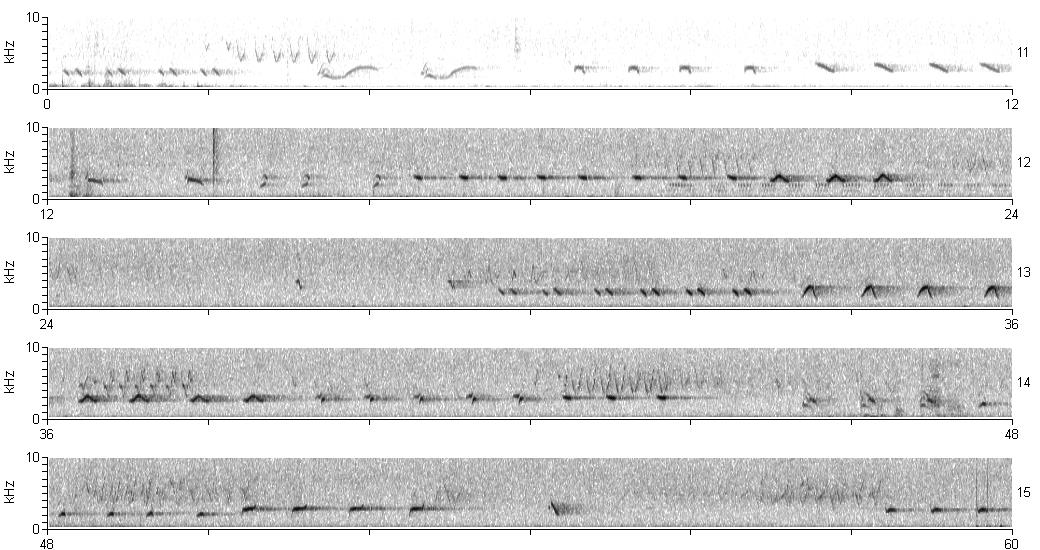A few days ago I mentioned "robin sound-alikes." I was referring to the American Robin, not
surprising since my base of operations is in the range of that bird. But, as today's song demonstrates, not all "robin-like birds" are "robin sound-alikes." Some are, e.g.,
Costa Rica's national bird, the yigüirro, known in English as Clay-colored Thrush; many are not. Today's bird, a Chestnut Thrush, was sitting on top of a spruce spire more than 100 meters away,
belting out this emphatic song, matching the American Robin in volume and intensity if not acoustical and syntactical details.
Let's clear up some nomenclature. The American Robin is Turdus migratorius; I am using the sobriquet "robin-like-bird" for its genus, Turdus.
Most members of the genus are the same shape and size as the American Robin, and have the same ecological niche, sharing a fondness for berries and worms.
eBird lists 86 species for this genus, but only three are called "robin." Most of them are called "thrush" and a few are called "blackbird." The latter name is
just as descriptive of the Eurasian Blackbird (Turdus merula), as it is of the various American blackbirds, which are in a different family from the thrushes.
The American Robin got its name from a superficial resemblance to the Robin of Europe. That bird must have been very, very popular with English-speaking
colonists. It has shared its name with dozens of species around the world, in numerous families. It would be a great and wonderful quest to see them all. Or,
to seek all 86 members of genus Turdus. In either case, the side benefits would be many.

